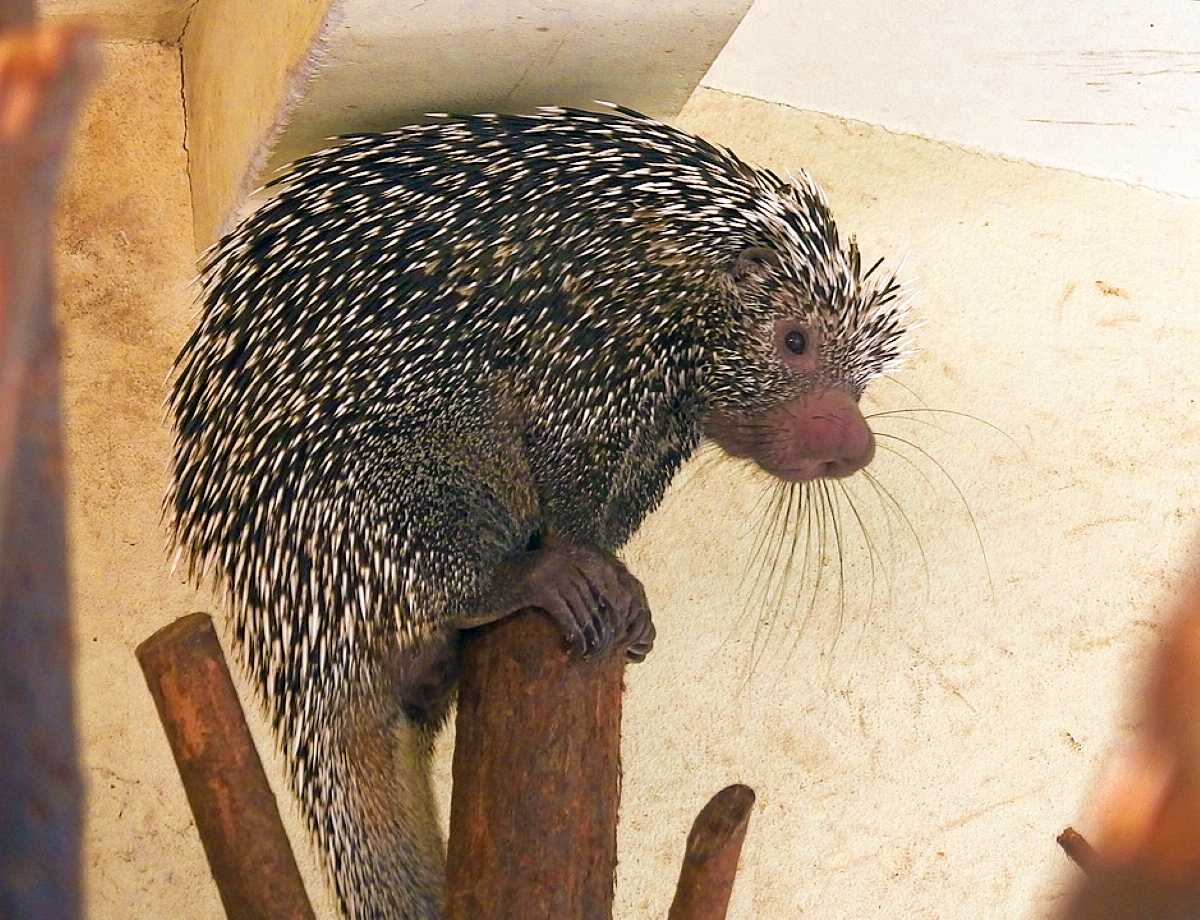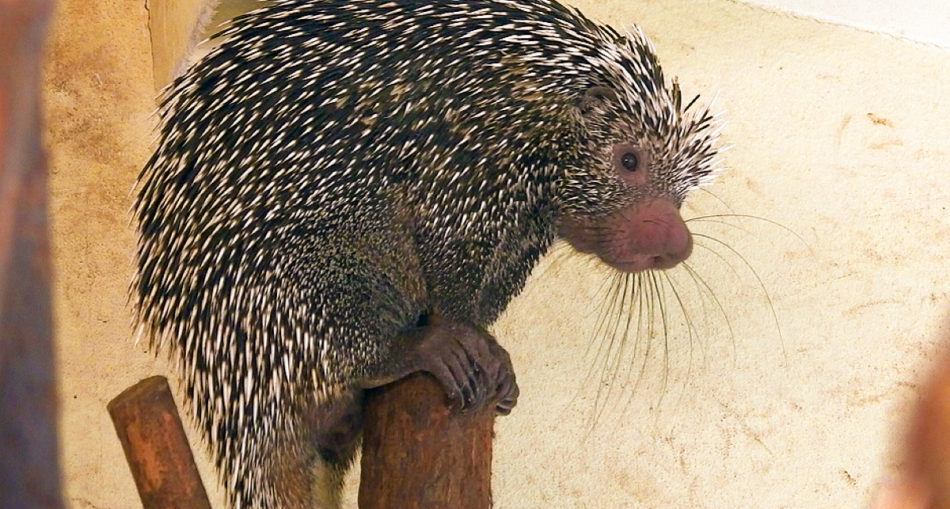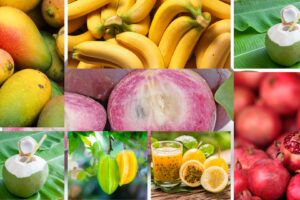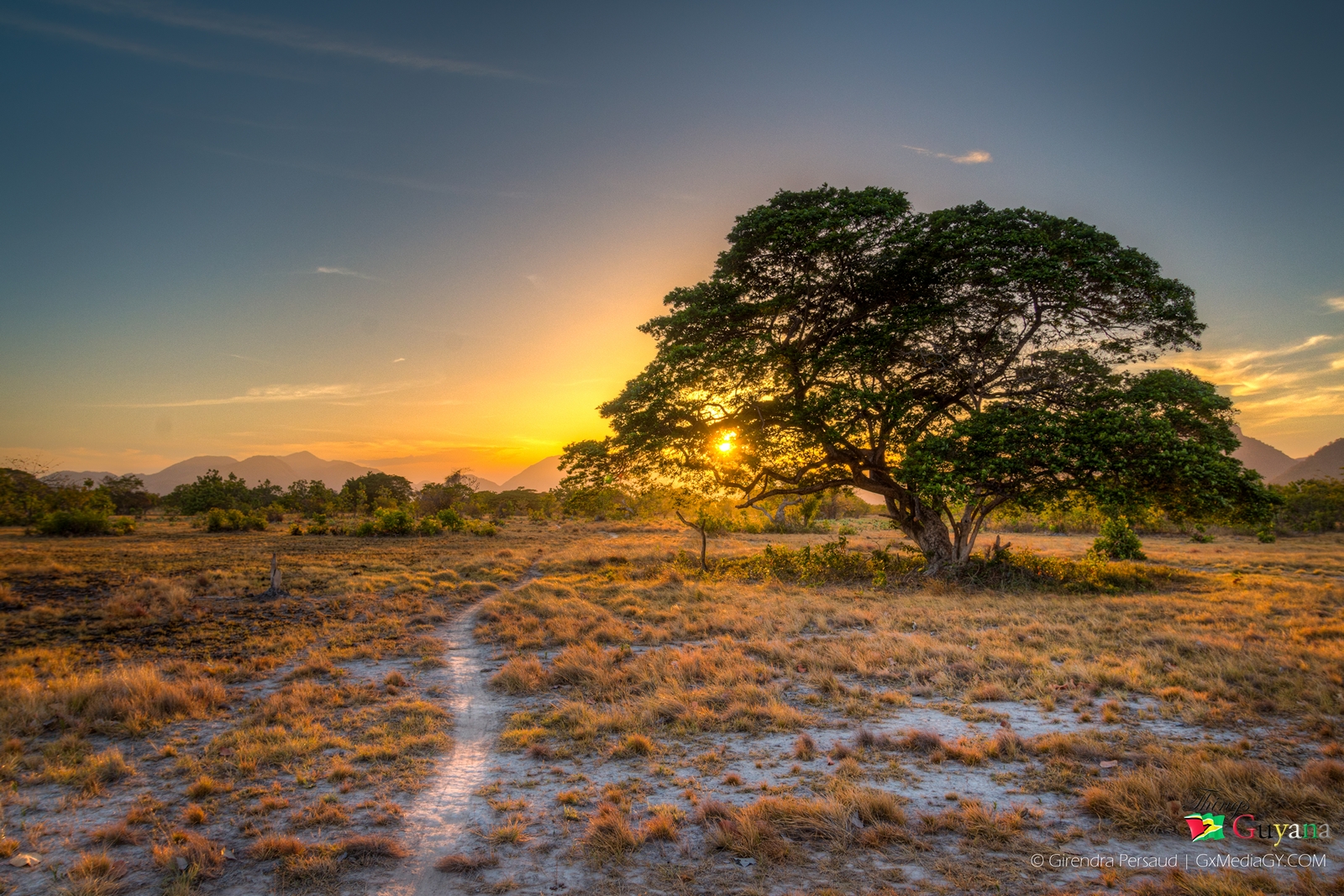Brazilian porcupines are known for their long, muscular and prehensile tails. Another striking thing about them is, of course, their long quills. Their semi-hollow quills are tricolored with white tips terminating in a barbed end. This makes the 60 to 100 millimeter quills effective at penetrating the flesh of predators and quite difficult to remove. As if that wasn’t enough, another unique characteristic of this porcupine is their specialized foot with its long-clawed digits, which are ideal for moving and foraging among trees.
Brazilian porcupines are known for their long, muscular and prehensile tails. Another striking thing about them is, of course, their long quills. Their semi-hollow quills are tricoloured with white tips terminating in a barbed end. This makes the sixty to one hundred (60 to 100) millimetre quills effective at penetrating the flesh of predators and quite difficult to remove. As if that wasn’t enough, another unique characteristic of this porcupine is their specialized foot with its long-clawed digits, which are ideal for moving and foraging among trees.

The Brazilian Porcupine – Photo By Jik jik – Own work, CC BY-SA 4.0, https://commons.wikimedia.org/w/index.php?curid=40107539
Features Of The Brazilian Porcupine
- Colour – The skin colour of an adult Brazilian porcupine can vary in hue from yellow-orange rust to brownish-black and is usually covered with long quills on the dorsal side. Both male and female porcupines have a pungent waxy substance that exudes from the sebaceous glands which cause a yellow-orange hue.
- Prehensile Tail – The tails are used for hanging, stabilization and grasping while climbing. It is very muscular and has a callus pad near the ventral tip to help when the Brazilian porcupines need to grasp vines and branches.
- Body Features – The eyes of the Brazilian porcupines are encircled by a thin band of bare skin in the coat of spines that goes all the way to the nose. They also have wide nasal openings and specialized upper incisors along with long whiskers and small ears.
- Length & Weight – In length, the adult Brazilian porcupine can range from three hundred to six hundred (300-600) millimetres and the tail makes an additional three hundred thirty to four hundred eighty-five (330-485) millimetres. When the adult males and females are full-grown, they can weigh up to 4.55 and 5 kilograms respectively.
- Young – Young Brazilian porcupines would have a dense covering of reddish-brown guard hairs on their heads and bodies. These hairs are about thirty-five (35) millimetres in length and will harden to quills in the future. In length, the young can be about five hundred (500) millimetres from the nose to the tail tip and weigh 415 grams at birth.
Did You Know? The most distinguishing feature of the Brazilian porcupine is its size. Rarely they exceed 600 millimetres in length and 5 kilograms in mass. In contrast, there are North American porcupines that would range from 10 to 12 kilograms and 600 to 900 millimetres respectively.
Scientific Classification Of The Brazilian Porcupine
Brazilian Porcupine – Coendou prehensilis [Scientific name]
- Kingdom: Animalia
- Phylum: Chordata
- Class: Mammalia
- Order: Rodentia
- Family: Erethizontidae
- Genus: Coendou
- Species: C. prehensilis
Habitat Of The Brazilian Porcupine
You can find Brazilian porcupines in places like the Guianas, including Guyana, Brazil, Argentina, Colombia, Venezuela, Bolivia, Trinidad, and there is a single record from Ecuador. The porcupine would inhabit tropical forests at elevations up to 1500 m. They love to inhabit humid mountainous highlands, riverine llanos (vast tropical grasslands) and a few croplands. They mostly like to live in old growth forests where they can forage and dwell in an abundance of trees.
Diet Of The Brazilian Porcupine
Brazilian porcupines are herbivores. They would eat the bark and cambium layer of some trees, buds, fruits, roots, stems, leaves, blossoms, unripened seeds, and agricultural crops like bananas and corn. A unique thing about these porcupines is that they use their long claws to peel the bark from trees and to open fruits. Seeds of queen or cocos palms (Syagrus romanzoffiana) are a favourite food source for them. When these porcupines live in captivity, they are supplemented with corn, rat pellets, apples, dried grain, kale, oranges, Monkey Chow and sweet potato.
Reproduction Of The Brazilian Porcupine
There is no breeding season but females in captivity have been observed to have a fertile postpartum estrus. Females can conceive and copulate just 3-18 days after giving birth to a litter. This trait is common among the other hystricognath rodents with no breeding seasons. The gestation period ranges from 195-210 days then one young is born on the ground. The young are weaned between 10 to 15 weeks. At the age of nineteen (19) months the females would reach sexual maturity but it is unknown when males would reach. The limits of the reproductive lifespan are also unknown but Brazilian porcupines in captivity have been documented to produce young for more than 10 years.
Young: Brazilian porcupines are born with well-developed claws, strongly prehensile tails and opened eyes. They are also born with a dense coat of guard hairs and have natal quills up to fifteen (15) millimetres in length that protect them. These quills will reach adult length after about 10 weeks. Young porcupines are able to move and climb but for the first two to three (2-3) weeks of life, it does not wander far from where it is born. However, when it is disturbed it will climb trees.
10 Facts About The Brazilian Porcupine
- In captivity, Brazilian porcupines can live up to twenty-seven (27) years. In the wild, life expectancy is less and limited due to tooth wear caused by their diet.
- When mates and foods are abundant, the Brazilian porcupines are socially tolerant. However, they would prefer small groups or even a completely solitary lifestyle.
- Eighty-five percent (85%) of their time is spent in trees where they would forage, sleep and communicate with other porcupines. Yes, they are arboreal porcupines.
- They use hollow trunks, forks and high branches for dens and sleeping during the day.
- They would rarely go to the ground and when they do it is to give birth, mate, intermittently forage and defecate.
- Between four p.m. and two a.m. are peak activity times for these nocturnal animals.
- Acoustic, chemical and visual forms are ways of communication for Brazilian porcupines.
- Main auditory communications are long moans, yelps, grunts, clicks, mews, squeaks and hisses.
- When entering into or withdrawing from close interactions with other porcupines they would yelp and when communicating over long distances they would have extended moans.
- When at ease the quills would rest flat against the skin but when threatened it will stand up perpendicular to it body.
Brazilian Porcupine In Guyana
This article would have revealed a lot about this magnificent animal. This shy, nocturnal porcupine is solitary or lives in pairs in the branches of trees. It is not aggressive but will defend itself ferociously if attacked. Its diet consists of leaves, fruit, and small fresh twigs and shoots. This creature can easily be tamed enough to be kept in captivity. When excited, porcupines stamp their hind feet. Vocalizations consist of growls and cries. If caught, the porcupine rolls into a ball. The prehensile tail is used to curl around branches when climbing. In the North Rupununi, it has been noted for having a preference for palm forests.
Article References:
- https://en.wikipedia.org/wiki/Brazilian_porcupine
- https://animaldiversity.org/accounts/Coendou_prehensilis/
- https://www.stabroeknews.com/2012/03/18/features/brazilian-porcupine/







